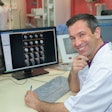NEW ORLEANS - Personnel shortages, leaner budgets, and an increasing volume of exams are affecting not only the quality of care delivered to patients, but also the disposition of healthcare professionals. Retaining qualified caregivers is critical to the success of a facility, and employees who are satisfied with their workplace create a harmonious environment for both patients and fellow staff.
Dissatisfied employees, according to conventional wisdom, are agents of unrest and disharmony, threatening the stability of a department. According to a speaker at the American Healthcare Radiology Administrators (AHRA) annual meeting, employee dissatisfaction is actually a gift that can be used to create job satisfaction, if managed properly.
"When faced with dissatisfaction, the decision to wait it out, leave, or seek help comes from your ability to get past your personal feelings and reframe the dissatisfaction as a gift -- that is, an opportunity for you to learn," said Roberta Edge, director of imaging services at Doctors Medical Center in Modesto, CA.
Edge listed five elements that were common in job dissatisfaction cases among radiology employees:
- Frustrated ideals.
- Noise pollution.
- Interpersonal conflicts.
- Lack of knowledge.
- Insufficient social support.
At a previous job that Edge held, an employee survey of 107 workers revealed a high level of dissatisfaction, she said. In fact, at least 30 of the employees had voiced their complaints to the senior administration of the facility.
Edge chose to face this crisis-level degree of job dissatisfaction head on, and developed a program to address and change the climate of her staff’s work environment. Her first step was to bring in consultants, found within her own organization, to facilitate the necessary change management.
"Consultants don’t need to be high-priced experts from outside organizations. More often than not, you can use respected individuals from within your own institution," she said.
Her next step was to get the administration's approval to sponsor a workgroup that would examine the issues, create solutions, and implement those solutions within their areas of responsibility. Executive management at her institution agreed to underwrite a team of 15 leaders, who would meet for two hours a week before work for six weeks, as well as sponsor a continental breakfast for the group.
"If you feed them, they will come," she quipped.
The team was comprised of radiologic technologists from CT, MR, and diagnostic radiology, a tech from each of the satellite facilities, the lead transcriptionist, the lead receptionists from the imaging center and the hospital, the outpatient and inpatient managers, and a radiologist. The first task of the group was to conduct an "archeological" review of the department’s past.
What they found was that the same issues, communication, equipment, and staffing, had been problems under every director at the facility for the past 26 years. They also learned that a single issue -- the institution's rapid growth due to consolidation with other healthcare facilities over the past four years -- had brought the problem to crisis proportions.
The first resolution the group agreed to as an outcome of this exercise was to have a positive attitude about what they were attempting. The next few sessions were spent identifying actions and behaviors that destroy trust. The result of this work was to create a work climate that encouraged and rewarded trust and did not support distrustful language or actions.
Of particular interest to Edge was a session that a facilitator conducted to obtain a vision of the future for the department from the group. She noted that the staff tended to see specific items, such as electronic imaging and scheduling software, as solutions to problems, while the management representatives viewed the overall environment, such as a harmonious work group, as the key to problem solving.
The group agreed to an eight-point plan to create a better workplace for themselves and fellow employees:
- Learn skill development.
- Put aside blame and judgment.
- Communicate learning to others.
- Be open.
- Select key people to lead.
- Dig deeper into problems, create and implement solutions.
- Hold regular staff meetings, as well as subgroup meetings for each area of responsibility.
- Stay true to the principles of patience, trust , fairness, respect, and accountability.
Edge cautioned the administrators in the audience to be prepared to face unrealistic expectations from employees about the resolution of problems within their institution.
"The expectation from staff is that things are going to get better overnight; however, in reality, change is slow and gradual," she said.
By Jonathan S. Batchelor
AuntMinnie.com staff writer
July 31, 2002
Related Reading
Motivational programs bolster employee retention, July 29, 2002
Managers, employees, union reps join in delicate dance, August 22, 2001
RT updates: JRCERT extends deadline; CSRT ponders representation, October 31, 2001
Surviving and thriving in a radiology group merger, June 6, 2002
Copyright © 2002 AuntMinnie.com



















